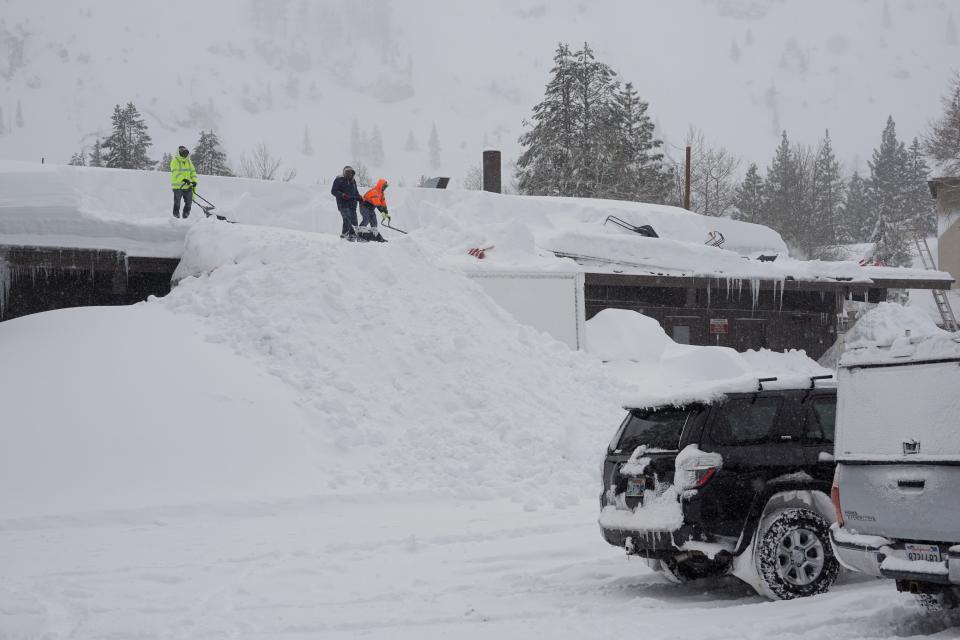After another wet winter, is the West still facing a water crisis?
Time is running out for the West's wet season, but recent storms have done wonders for the snowpack and the drought across much of the region, especially in California.
"The drought situation across the western U.S. has improved considerably as a result of a very wet winter," Jay Famiglietti, a hydrologist at Arizona State University, told USA TODAY.
In fact, both California and Nevada are "essentially drought-free" at the moment, which is "really unusual," he said.
Elsewhere, the giant reservoirs of the Colorado River Basin, Lakes Mead and Powell, are now about one-third full, said Brad Udall, senior scientist at Colorado State University. This is up from the same time last year, when they were 25% full, but still far from their historic highs of the early 2000s, when they were 95% full.
But the wet winter is not a panacea for the long-term western water crisis, which is "here to stay," Udall said. "I like to say it is a collision of 19th-century water law, 20th-century infrastructure and 21st-century population growth and climate change."
A promising drought forecast in California
The drought forecast looks promising in California: "The combination of the abundance of rain and snow from the winter of 2022-2023, the state of the reservoirs, and what has happened this winter gives a high confidence that drought conditions will remain absent in California well into 2025," AccuWeather California weather expert Ken Clark said, in a statement.
This is good news for both the short-term drought concerns and the long-term battle against widespread drought, AccuWeather said. "Years of drought took their toll on the state's water table, so back-to-back winters with blockbuster storms have replenished water reservoirs and quenched the parched landscape," said AccuWeather meteorologist Brian Lada.
Lakes Mead and Powell remain at 'dangerously low levels'
"Although both reservoirs have experienced wet winters over the past few years, they both remain at dangerously low levels after a couple of decades of megadrought," Famiglietti said.
The two reservoirs, fed by the Colorado River, provide the water 40 million Americans depend on.
Specifically, Lake Mead has risen over 3.5 feet since its summer low because of the current wet winter. Lake Powell, however, has actually dropped about 23 feet since its summer 2023 high, which was a result of the wet winter of 2022-23.
And additionally, a pair of wet winters doesn't solve the long-term problem: The Colorado River has been in crisis because of a multidecade drought in the West intensified by climate change, rising demand and overuse. The river also serves Mexico and more than two dozen Native American tribes, produces hydropower, and supplies water to farms that grow most of the nation’s winter vegetables.
What about California's current snowpack and reservoir levels? Have the recent storms helped?
The recent blizzard across California lifted its snowpack levels considerably, Famiglietti said. "Snowpack levels are now ’normal’ across the state for this time of year, and nearly all of the state’s major reservoirs are above historic averages for this time of year," he said. "These higher reservoir levels will alleviate pressure on the state’s perennially overtaxed groundwater reserves."
On Tuesday, NOAA on X said there's been a "HUGE improvement in the Sierra Nevada snowpack since January 1st ... thanks to several atmospheric rivers and the record setting winter storm event this past weekend."
In a statement, California Department of Water Resources Director Karla Nemeth last week said, “We are now in the last month of the traditional snow season and while conditions have dramatically improved since the beginning of the year, March will be critical in determining if we finish above or below average."

What is the overall drought situation in the West at the moment?
When it comes to drought, the West looks "pretty good right now," Udall said. Specifically, only about 25% of the western U.S. is currently in drought conditions, according to the latest U.S. Drought Monitor, which is down from 51% this time last year.
What does all this mean for the wildfire season in California and the West in general?
The additional rainfall so far this winter bodes well for decreasing fire severity later in the year, especially in California, Famiglietti said.
However, he said Arizona and New Mexico have not had the benefit of the additional rain like much of the western U.S., and so will likely remain at high risk for wildfires.
In addition, Udall told USA TODAY that the next six weeks are especially crucial for the fire season in the West. If it stays wet and cool, that could help reduce the fire season's severity. If it suddenly turns hot and dry, he said that would potentially dry out the fuels that can produce wildfires.
Contributing: The Associated Press
This article originally appeared on USA TODAY: Lakes Mead and Powell still face low water as California drought eases
